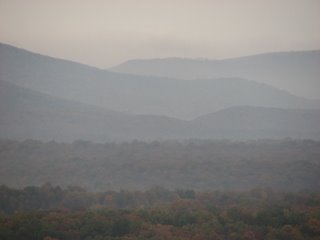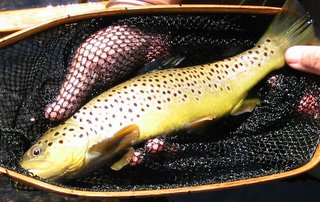
This is part one of a two part account of our trip to LeConte Lodge on top of Mount LeConte in the Great Smoky Mountains National Park (GSMNP). Part one is about the hike and part two will be about LeConte Lodge and the scenery at the top.
While reading the daily fly fishing report from the Little River Outfitters web site, I read from time to time about the daily temperature or rain on Mount LeConte. I looked up Mt. LeConte on the internet and found that there was a lodge at 6,593 feet that had overnight accommodations and meals but could only be reached by a minimum of a 5 mile hike. That caught my interest immediately.
http://www.leconte-lodge.com Nancy and I have backpacked with the Sierra Club to Colorado, New Mexico, and Big Bend National Park on 3 or 4 day trips. While we enjoy the hiking and the scenery tremendously, we don’t necessarily enjoy the 35-45 pound packs and the sleeping on the ground (even with great Therm-a-Rest pads). A hike, great scenery, a warm bed and wine with dinner…..
count me in! 
However, it turns out that the LeConte Lodge books a year in advance and it takes some people 5 years to get a reservation. This place is in demand! So, I sent an email to the reservation address on Friday evening August 18 and asked if there were any cancellations. Three days later I received an email stating that there was a cancellation for 2 on August 31.
Count us in!The only way to get to the lodge is via hiking trail. There are five trails to choose from ranging from 5.0 to 8.0 miles. I chose the Alum Cave trail, not because it was the shortest at 5 miles but for a couple of other reasons. First, it is supposed to be the most scenic trail to the top (although also the most strenuous) but second, because I thought that our car might be safer overnight near a main road rather that on a back road where the other trails originated.
Alum Cave Trail is beautiful. Even though it was rainy and foggy most of the trip up, we had all the right rain gear and were dry. It is all uphill, but it starts out gradually, following streams for the first mile. There are some single log bridges over the streams and a rock staircase through a natural tunnel. The view is mostly rhododendron, hemlock (some 200 years old) and yellow birch. At 2 miles there is a view of Inspiration Point and Peregrine Peak. A little further is Alum Cave Bluffs, a large overhang and a frequent day hike destination.

The second half of the trail is steeper, rockier, and sometimes very narrow with some places consisting of a rock wall on your right and a steep drop off on your left. Some sections of the trail had cables attached to the rock wall to hang onto. Nancy slowed down and walked very carefully at these points. Hiking poles help your balance as well as your knees on trails like this.
The vegetation is very thick the whole way up. A
black bear could be 6 feet from the trail and you couldn’t see it. In fact one was. On the way back down, a woman about 20 yards behind us let out a yell as a bear crashed onto the trail behind her and then on down into the rhododendron below the trail. Both she and the bear scared each other. But I think only one had wet pants. A day earlier, on the way up, we met a couple coming down that also saw a bear on the trail. Once again, it ran when it saw the people. Someone else told us that at the beginning of the week, the Park Rangers had to dart and relocate a bear nearby that was showing a little too much aggression toward humans.

The last mile or so of the trail before LeConte Lodge looks like a Pacific Northwest rain forest with spruces and firs and logs covered with moss. You expect to see an elk stepping out at any time. There are elk in the GSMNP, but I don’t believe they are near this area of the park.
The hike is 5 miles one way. The web sites and the people we talked to said that it takes about 4 hours. I figured that we would beat that time. Our times up and down were just about the same……4 hours.
Alum Cave Trail is a beautiful hike. It is hard, but not too hard. It is just long enough to appreciate it, but not too long to not enjoy it. By the way, if you think you are a hiker, look up a man named Ed Wright.
http://www.mtleconte.com/ He has hiked the Alum Cave Trail to Mount LeConte once in 1982, then twice in 1985. He is currently at roundtrip number 1301. He hiked it 230 times in 1991 alone. He has had a knee replaced a few years ago and doesn’t hike it as often anymore; so, if you start soon you might be able to beat his record.
Part two….The Top…..in a few days.
















































